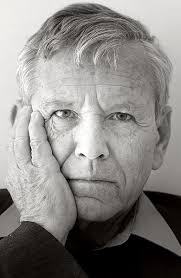“I work like a watchmaker or an old-fashioned silversmith: one eye screwed up, the other fitted with a watchmaker’s magnifying glass, with a fine tweezers between my fingers, with bits of paper … in front of me on my desk on which I have written various words, verbs, adjectives, and adverbs, and bits of dismantled sentences, fragments of expressions and descriptions and all kinds of tentative combinations. Every now and again I pick up one of these particles, these molecules of text, carefully with my tweezers, hold it up to the light and examine it carefully, turn it in various directions, lean forward and rub it or polish it, hold it up to the light again, rub it again slightly, then lean forward and fit it into the texture of the cloth I am weaving.”
As journalists, we strive for terse, pithy sentences. Then comes this sprawling description of writing in which the writer becomes a silversmith, watchmaker, weaver and, ultimately, a chemist. Using the word “carefully” twice, Oz takes this creative magic we call writing and strips it down to the tedious but wondrous craft it is.

Amos Oz
“A Tale of Love and Darkness” is the first time that prominent Israeli author and intellectural Oz Amos wrote publicly about much of his family history, including his mother’s suicide in 1952. The book was first published in Hebrew in 2002, and later translated into more than two dozen languages and selling more than 1 million copies worldwide.
Oz died on Dec. 28, 2018. English was his second language.


